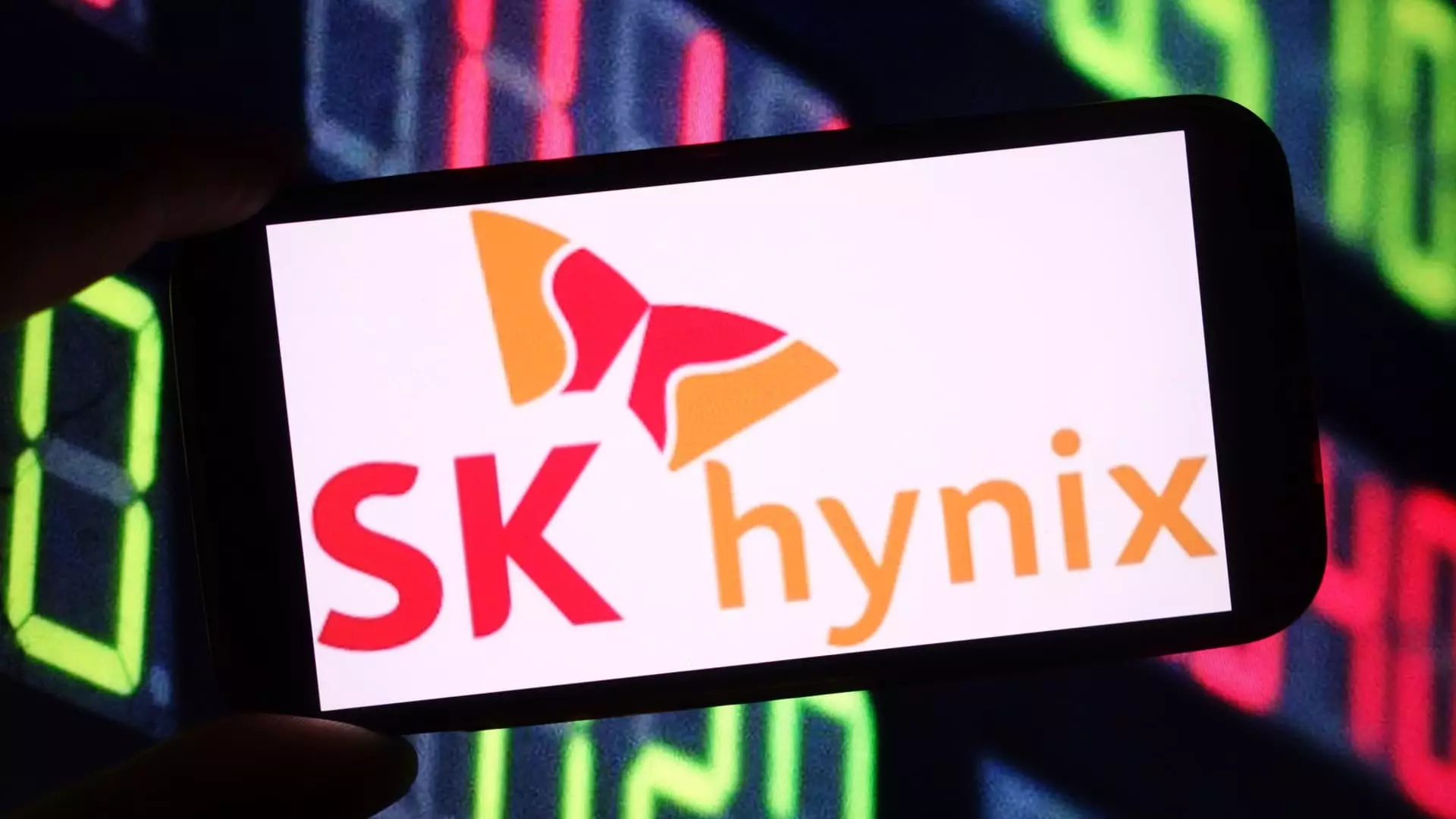Recently, SK Hynix reported an impressive financial performance for the first quarter of the year, surpassing expectations for both revenue and operating profit. With revenue hitting 17.64 trillion won (approximately $12.36 billion) and operating profit reaching 7.44 trillion won, the company’s results reflect a remarkable year-over-year increase of 42% and an astonishing 158% surge in operating profit. Even though these figures are a testament to the company’s robust position in the semiconductor memory market, it’s crucial to contextualize these numbers with the prevailing industry dynamics.
Despite the annual growth, on a quarter-to-quarter comparison, SK Hynix experienced a decline in both revenue and operating profit—down 11% and 8%, respectively—from the record-breaking results of the December quarter. This dip raises questions about the sustainability of the current demand, especially given the underlying macroeconomic uncertainties. The company’s executives have voiced concerns over the unpredictable impacts of U.S. tariff policies, highlighting a situation where geopolitical tensions may pose significant risks to market stability.
The Impact of Macroeconomic Factors
The global semiconductor market is intricately tied to various macroeconomic factors, including trade policies and consumer electronics trends. SK Hynix’s caution regarding future demand volatility is warranted, considering the shifting landscape of tariff regulations and their potential implications on semiconductor exports. Tariffs on technology products could incentivize companies to reevaluate their supply chains and partnerships, which would, in turn, affect sales volumes and profit margins.
On the brighter side of the demand spectrum, SK Hynix remains optimistic about the forthcoming AI wave. The company anticipates that the launch of AI-centric consumer electronics, including PCs and smartphones, will create a surge in memory demand. The allure of AI functionalities in new devices is likely to stimulate consumer interest, providing a buffer against the volatility stemming from geopolitical concerns.
AI’s Transformative Role in the Memory Market
Perhaps the most intriguing aspect of SK Hynix’s performance is the pronounced influence of artificial intelligence on the memory market. The company’s recent earnings release emphasized how AI has significantly bolstered demand for high bandwidth memory (HBM), a critical component in AI servers. As AI adoption accelerates, companies like SK Hynix stand to gain enormously from entrenched relationships with major clients in the tech world, notably Nvidia, a titan in the AI space.
Furthermore, the concept of “sovereign AI projects” indicates growing national commitments to developing domestic AI capabilities. These initiatives not only enhance national security but also contribute to an increased demand for memory products. SK Hynix has identified collaborative frameworks around open-source AI models, like DeepSeek’s R1 reasoning model, as influential catalysts for the burgeoning demand in the memory sector. The reduction of development costs in AI has further democratized access and experimentation, propelling a revolution in AI solutions.
Market Leadership and Competitive Landscape
Grounded in a strategic focus on R&D and advanced manufacturing technologies, SK Hynix has emerged as a leading player in the high bandwidth memory market. A recent report indicated that the company commands an astounding 70% revenue market share in HBM for the first quarter, an impressive feat in a competitive landscape that includes stalwarts like Micron Technology and Samsung Electronics.
As the demand for faster and more efficient memory solutions heightens with the proliferation of AI applications, SK Hynix’s current positioning may translate into a sustainable competitive advantage. However, sustaining this lead in the memory sector will require a keen understanding of technological innovation and a nimble response to changes in consumer behavior.
While SE Hynix’s immediate outlook is clouded by economic uncertainties, its heavy investment in AI-related memory solutions could pave the way for substantial growth as the landscape evolves. The interplay between emerging technologies and memory capabilities will undoubtedly moderate competitive dynamics, making it an exhilarating time to monitor developments within this sector.


Leave a Reply